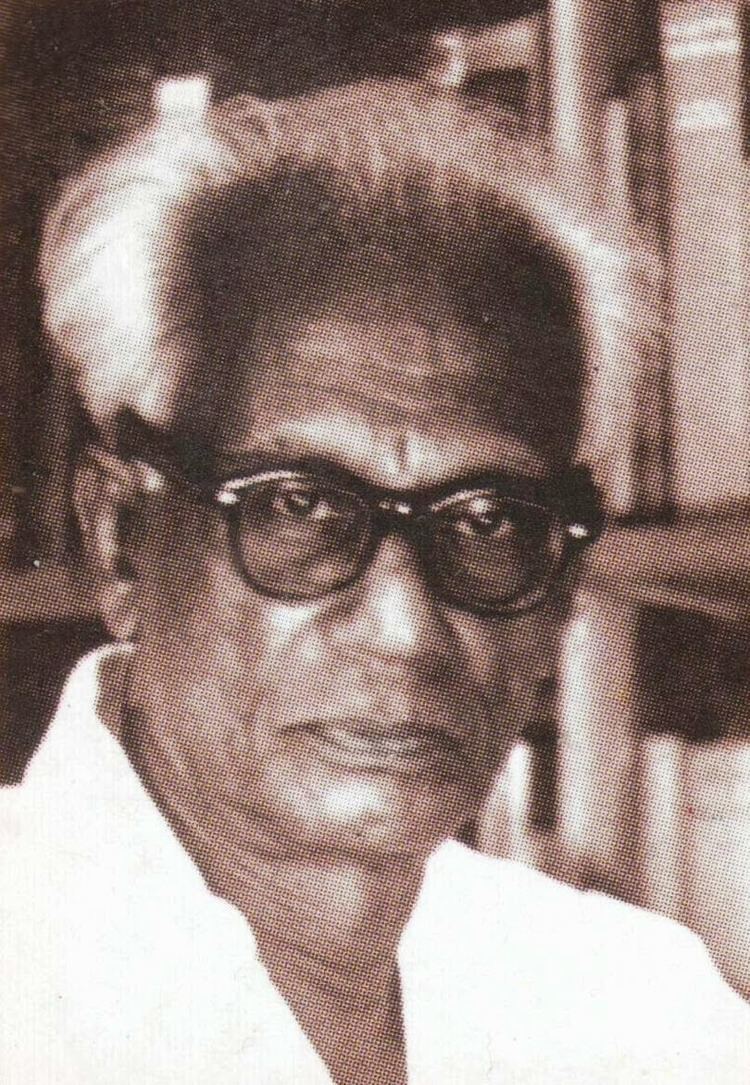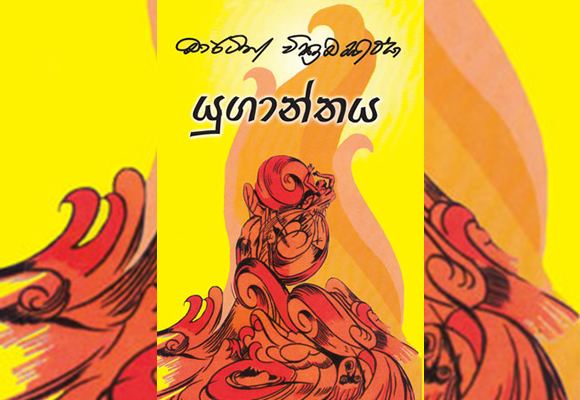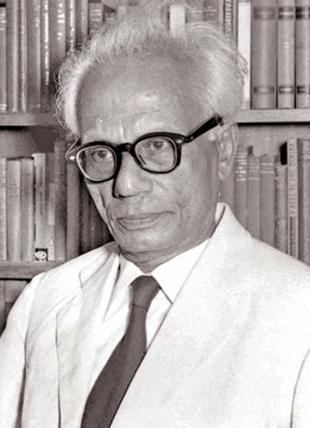Role Novelist Name Martin Wickramasinghe | Religion Theravada Buddhism Ethnicity Sinhalese Spouse Prema de Silva (m. 1925) | |
 | ||
Other names Lama Hewage Don Martin Wickramasinghe Children Sarath Kusum Wickramasinghe,Vasantha Kumara Wickramasinghe,Rupa Malathie Saparamadu,Himanshu Ranga Wickramasinghe,Usha Ekanayake,Unie Kuruppu Books Madol Doova, Yuganthaya, Kaliyugaya, Gamperaliya, Kurumini saththu | ||
Martin wickramasinghe by ceylon holidays cmb
Lama Hewage Don Martin Wickramasinghe commonly Martin Wickramasinghe, MBE (Sinhalese: මාර්ටින් වික්රමසිංහ) (29 May 1890 – 23 July 1976) was a Sri Lankan novelist. His books have been translated into several languages.
Contents
- Martin wickramasinghe by ceylon holidays cmb
- Sri lanka telecom pura varuna great novelist martin wickramasinghe
- Early life
- Creative writer and pioneer critic
- Peradeniya school and poet
- Later years
- Honors and awards
- Publications
- Translations in other languages
- Films and television productions
- References

The search for roots is a central theme in Wickramasinghe's writings on the culture and life of the people of Sri Lanka. His work explored and applied modern knowledge in natural and social sciences, literature, linguistics, the arts, philosophy, education, Buddhism and comparative religion. Wickramasinghe is often acclaimed as the father of modern Sinhala literature.
Sri lanka telecom pura varuna great novelist martin wickramasinghe
Early life

Wickramasinghe was born on 29 May 1890, in the town of Koggala, in Southern Sri Lanka, the only son of Peace Officer (Muladeniya) Lamahewage Don Bastian Wickramasinghe, and Magalle Balapitiya Liyanage Thochchohamy. Koggala was bounded on one side by a reef, and on the other by Koggala Lagoon, a large coastal lake into which the numerous tributaries of the Koggala Oya drained. The landscapes of the sea, Koggala Lagoon studded with little islands, the flora and fauna, the forested hinterland, and the changing patterns of life and culture of the people of the village would later influence his work.

At the age of five Wickramasinghe was taught the Sinhala alphabet, at home and in the village temple, by a monk, Andiris Gurunnanse. He also learned the Devanagari script and could recite by memory long sections of the Hitopadesa. After two years he was taken to a vernacular school where he prospered until 1897 when he was sent to an English school in Galle called Buona Vista . In the two years spent at the school Wickramasinghe became fluent in English as well as Latin. When his father died, he returned to a vernacular school in Ahangama and subsequently lost interest in schooling.
Creative writer and pioneer critic
Wickramasinghe began his literary career with the novel Leela (1914) and an anthology of essays on literary criticism, Shastriya Lekhana (1919). Shortly thereafter he began a campaign to raise literary standards for the Sinhalese reading public with work such as Sahityodaya Katha (1932), Vichara Lipi (1941), Guttila Geetaya (1943) and Sinhala Sahityaye Nageema (1946) in which he evaluated the traditional literally heritage according to set rules of critical criteria formed by synthesising the best in Indian and western traditions of literary criticism.
Through the 1940s Wickramasinghe dabbled with the double role of literary critic and creative writer. Gamperaliya (1944) is widely held as the first Sinhalese novel with a serious intent that compares, in content and technique, with the great novels of modern world literature. The novel depicts the crumbling of traditional village life under the pressure of modernisation. The story of a successful family in a Southern village is used to portray the gradual replacement of traditional economic and social structure of the village by commercial city influence.
Wickramasinghe followed Gamperaliya with Yuganthaya (1948) and Kaliyugaya (1957) forming a trilogy. After the decay of the traditional life, the story details the rise of the bourgeoisie, with its urban base and entrepreneurial drive, ending with the formation of the labour movement and socialist theology and rise of hopes for a new social order. The trilogy was made into film by the renowned Sri Lankan director Dr. Lester James Peries.
With the development of a literary criticism movement in the early-'50s, Wickramasinghe presented the works Sahitya Kalava ('The Art of Literature' 1950) and Kawya Vicharaya ('The Criticism of Poetry' 1954). He received an MBE around this time.
Wickramasinghe's most heralded work came in 1956 with Viragaya. Due to the significance of its theme and the sophistication of its technique, the novel has come to be hailed as the greatest work of Sinhalese fiction. It follows the spiritual problems of a fragile Sinhalese youth raised in a traditional Buddhist home after being confronted with the spectre of adulthood and the responsibilities that come with it all made more complex with the modernisation of society. First-person narrative is used to put forth the autobiographical story of the anti-hero in impressionistic vignettes rather than in chronological order. It is a seminal work and spawned a spew of imitators, some good on their own right.
Peradeniya school and poet
Wickramasinghe was an early practitioner of the genre of poetry called nisandas, which ignored the restrictions placed on poetry by the traditional prosodic patterns. It drew inspiration from the work of Eliot, Pound, Whitman and other western poets and was part of a movement called Peradeniya School. Wickramasinghe's work was Teri Gi (1952).
The movement dissolved in the 1960s prompted by Wickramasinghe's contention that other writers of the Peradeniya School were not sensitive to cultural traditions and the Buddhist background of Sinhalese society. He accused Ediriweera Sarachchandra, Gunadasa Amarasekara and others of imitating "decadent" western and post-war Japanese literature and of supporting a nihilistic look on life with cyncial disregard for national tradition.
Later years
In 1973, Wickramasinghe wrote a new biography of Lord Buddha titled Bava Taranaya. In it the great teacher's change from royal heir in-waiting to philosopher-mendicant is portrayed as being a result of his sympathy to the poor and the downtrodden of society. Wickramasinghe died on 23 July 1976 and his home is now a folk museum.
Honors and awards
Publications
A comprehensive list of publications of Martin Wikramasinghe,
Novels
Collections of short stories
Plays
Literary criticism
Evolution and Anthropology
Philosophy
Autobiography
Biography
Books in English
History
Travel
Translations in other languages
Books translated in to other languages,
Films and television productions
Films and television productions, based on Martin Wikramasinghe's books,
Feature films
Television
